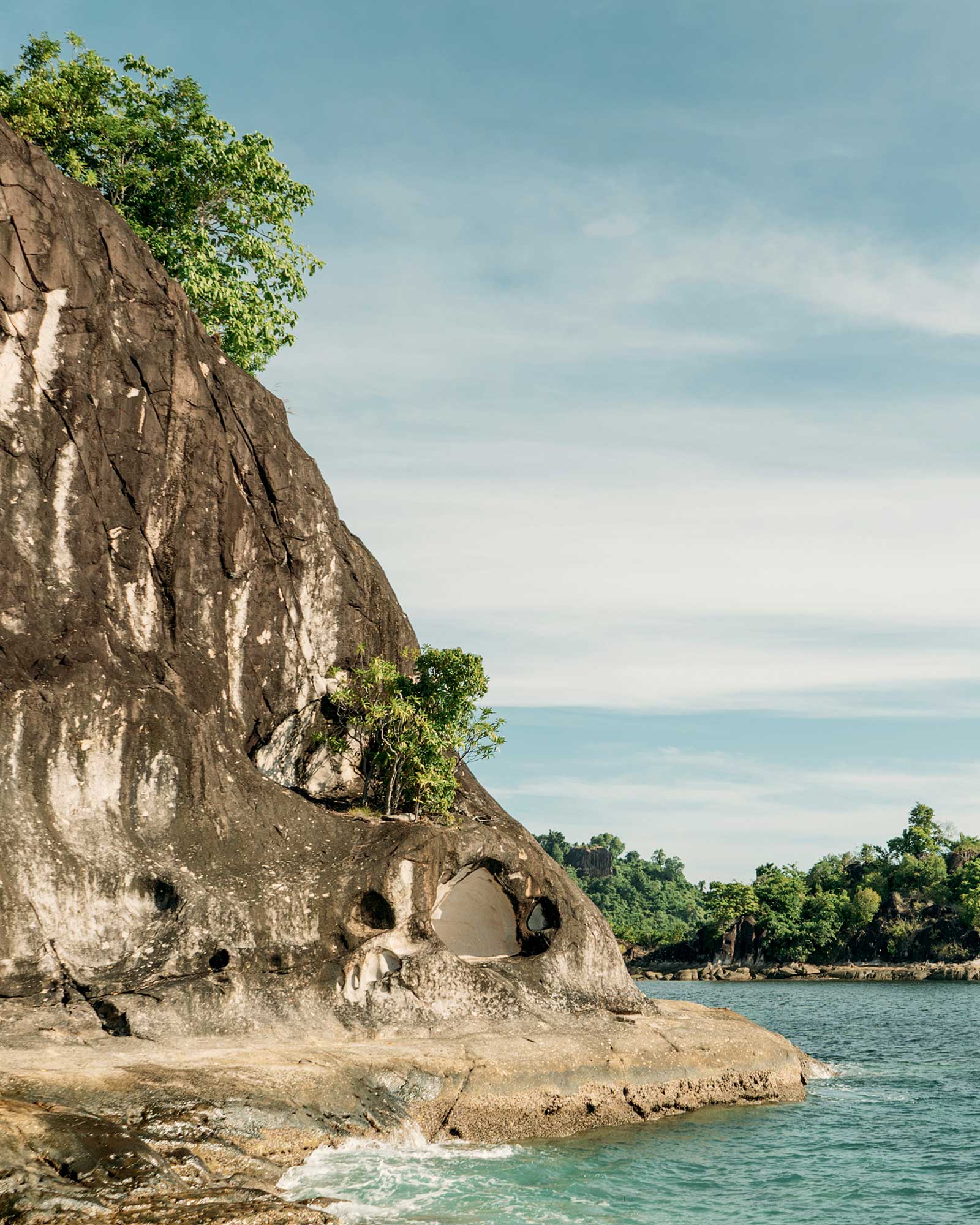Photo by Mohd Sarajan
The ports of Zamboanga have shaped its people for centuries. In both food and language, traces of culture from faraway islands can be felt until today.
Local tour guides say that if you take a satellite image of Southern Mindanao at night, you’ll spot the Zamboanga peninsula, the coast of Basilan further down south, and in between, an island made up of lights. Scattered across the port of Varadero de Cawit, a fleet of large ships and smaller trawlers switch on their lights to guide their path in the dark sea. For many of these fishing vessels, the day begins just when the sun is about to set as it’s easier to catch fish when they’re not under the sweltering sun.
Fisheries is the lifeblood of the seaside city, naturally. The ports have shaped Zamboanga’s culture and people across centuries. These hotspots for commerce have brought home a colorful cuisine that marries seafood, spices, and coconut products abundant from the land with Malaysian and Indonesian influences taken during the city’s history of trade with those foreign countries.
Hand to mouth
Having a feast of fresh seafood by the beach is always part of the agenda for tourists visiting. In this kamayan-style meal, tour guides advise people to eat and slurp their food like no one is watching.
For hearty fare, they served horned shell snails and squash cooked in coconut cream. It’s eaten by coaxing the meat out of the shell and sucking on one end of the spiraling cone. Sea grapes, or lato, fresh from the mangrove lagoon nearby, were also prepared as a salad.

Plates of freshly caught Samaral fish, blue crab, and shrimp cover the rest of the table. Most of the seafood is simply grilled, with a salsa con gata on the side made up of turmeric, ginger, peppers, and ground shrimp heads that add a richer dimension to each of the dishes.
Sauces like these are commonly served in Malay and Indonesian cuisine, however, it has adapted to Filipino palates as produce and spices that are more readily available in the region are used. With chili peppers being abundant in Zamboanga, the flavors lean towards a spicier profile.
The meal then ends with a selection of Tausug pastries and snacks. There is the Baulu, a sweet egg cake that’s crisp outside yet soft on the inside, similar to the madeleine; a bowl of hantak—colorful biscuits glazed in sugar; and the lokot lokot, which is made up of thin strings of rice flour and sugar, deep fried like a funnel cake, then folded into a crispy roll.
These pastries are usually eaten with traditional Sulu coffee called the Kahawa Sug. They serve the drink extra sweet, perfect if you’re sitting down with salty lips after having a dip in the ocean.
At the table, our team asks the locals how they properly say “delicious” in Zamboanga. And in the Chavacano language, it’s “sabroso” or “delicioso,” words that are so close to their language’s influences.

Lingua franca
The ports of Zamboanga have been a strategic trading point as early as the 13th and 14th centuries, when the city traded with Chinese, Malays and native groups further down south. Even in tongue, foreign cultures are felt in the city through the porous borders of the peninsula.
The people have tales about how the Chavacano language began. Many would say that it started where their historical forts were constructed: Spanish colonizers in between the 1500s and 1600s building either Fort Pilar (or the now-ruined La Caldera Fort) would give the locals instructions in Spanish, and the people of Zamboanga would respond in their local tongue. Eventually, the two would mix and become the language of the city.
This practice of adapting and adding onto what foreign countries bring to Zamboanga’s ports is a cultural element that the city has embraced fully. While material comes from what has arrived from the sea, they have also made it their own using what they already have.

